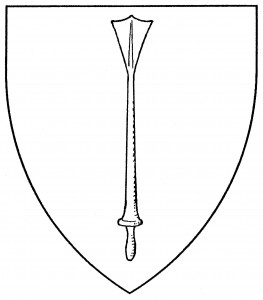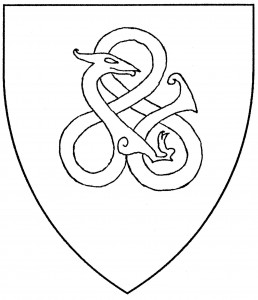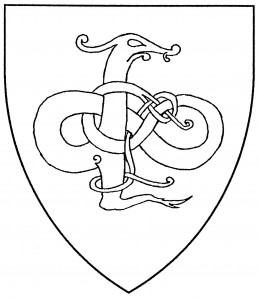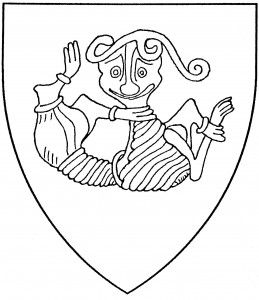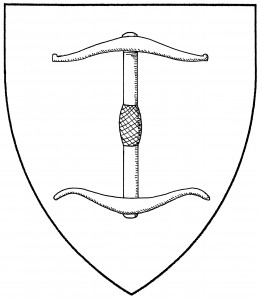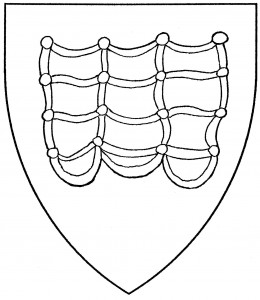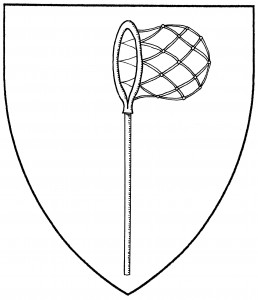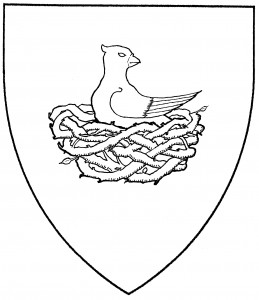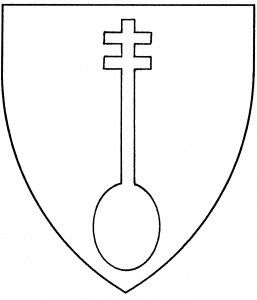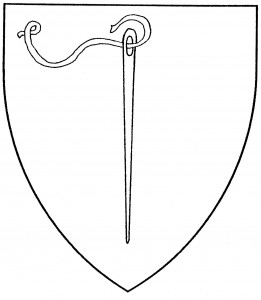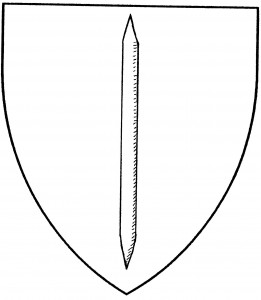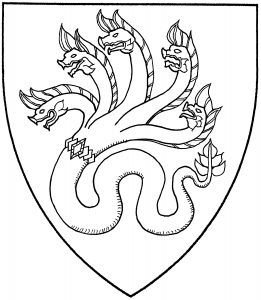
Passion nail (Period); tiler’s nail (Period)
A nail is a sharpened metal spike, driven with a hammer, used for holding together or anchoring pieces of stiff material (such as wood). Nails are palewise, point to base, by default.
Heraldry doesn’t firmly define the different types of nails: some of the names below have all been applied to the same type of nail. The following definitions are in most general use:
In period armory, the most common form of nail has a square cross section (seen with one corner to the viewer, appearing triangular) and a pointed head. It has been blazoned simply as a “nail” (cloue in French), as in the canting arms of Clouvyle or Clonvile, c.1520 [DBA2 513, Guillim1 209; also de Bara 59]. The same form, however, is also sometimes termed a “passion nail”, symbol of Christ’s Passion [Parker 447], and it is so blazoned in Society armory. The passion nail is found in the civic arms of Nagolt, 1605 [Siebmacher 226].
The “tiler’s nail” is a builder’s implement, with a square cross section and a flat head; Parker [422] cites this form of nail in the canting arms of Tyler, which DBA1 [390] dates temp. Henry VII.
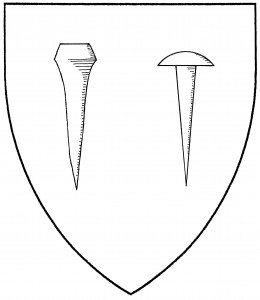
Horseshoe nail (Accepted); closing nail (Period)
Parker also cites the “horse nail” or “horseshoe nail”, though giving no illustration; however, by assigning it to the arms of Clouvile, he apparently equates it with the default nail (i.e., passion nail). In Society armory, the horseshoe nail is based on period artifacts.
Finally, there is the “closing nail”, used by glaziers to hold pieces of stained glass in place during leading. It too is a period charge, having been borne (without authority) by the Worshipful Company of Glaziers in 1588 [Bromley & Child 115].
The types of nail are not always distinguished in emblazons, and no heraldic difference is granted between them. For related charges, see rivet. See also staple.
The Order of the Silver Nail, of the Barony of Stargate, bears: Per chevron inverted sable and argent, a horseshoe nail and a horseshoe counterchanged.
Guy Nagel bears: Or, two passion nails in saltire sable.
Padruig Maclennan bears: Argent, a chevron gules between two crosses crosslet fitchy and in pile three tilers’ nails points conjoined all within a bordure embattled sable.
Christopher Starling bears: Per bend sable and argent, a closing nail bendwise sinister argent.
Sigurðr inn danski bears as a badge: A tiler’s nail Or.
